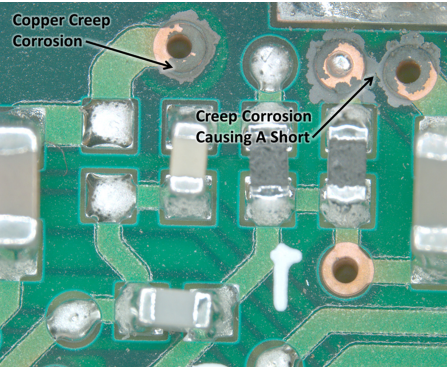
There are a number of best practices data center operators should follow to maintain the ideal environment for IT equipment, such as monitoring humidity levels and atmospheric corrosion, replacing dust filters in a timely manner, using chemical filtration systems, limiting foot traffic and using tak mats or sticky mats. In addition to following these best practices, data center operators should conduct an annual contamination assessment and do a thorough cleaning to ensure that data center clean room standards are met.
If not kept under control, airborne contaminants in data centers cause a variety of problems from impaired power efficiency to equipment failure. Because modern circuit boards and computer chips get smaller and smaller, contaminants more easily cause head crashes and contact intermittence.
Causes of Data Center Contamination
Contaminants come from both outside and inside data centers. Contaminants that can get in from the outside world include pollen, air pollution, sea salt and construction dust. Humans bring in lint from clothing, skin particles, hair and fibers. Contaminants that come from within include particles from data center infrastructure itself and from regular operations, such as particles from CRAH units, packing materials, and floor tiles. Other contaminants include corrosive gases that are created from processes both inside and outside the data center. Corrosive gases and dust particles can damage IT equipment over time, as seen in the image below.

Photo Credit: ASHRAE, 2011 Gaseous and Particulate Contamination Guidelines for Data Centers
Common Contaminants
Ferrous metal particles – Ferrous metal particles come from printers, tape drives, worn parts in HVAC units new floor tiles, conduit pipes and various mechanical parts. Because these metal particles are conductive, they can cause electrical damage to circuits boards, resulting in downtime.
Concrete dust – Unsealed concrete releases fine dust into the air that consists of calcium, silica and other by-products that are abrasive and corrosive. Even when concrete is sealed, these seals can break down over time and should be inspected regularly.
Corrosive gases – Gaseous contaminants such as sulfur dioxide, hydrogen sulfide, nitrogen dioxide, chlorine, ozone and others cause copper and silver corrosion. Over time, these contaminants cause corrosion of delicate metal parts and wiring in modern circuit boards and chips.
Zinc and tin whiskers – Yes, whiskers. Whiskers are small metal filaments that grow from electroplated steel floor plates, bars in the ceiling and other metal components. Because tin and zinc are efficient conductors of electricity, these filaments can cause shorts when they break off, circulate in the air and come in contact with circuits.
Chlorides/salts – Anyone who has been to the beach knows how quickly the salty air can cause corrosion on vehicles and other metal objects. Data centers that are located in coastal areas must be careful of airborne salinity levels.
Electrostatic dust– Hazardous dust as well as dust and lint particles from clothing, cardboard, paper and other seemingly benign particles can become static-charged and interfere with servers causing data loss, erroneous commands, resets and other issues.
Data Center Clean Room Standards
To protect modern IT equipment and prevent downtime, data centers should aim to meet the requirements of an ISO Class 8 clean room. To meet these standards data centers should undergo a particle count test, air pressure difference test and airflow test annually. Class 8 clean rooms should have a particle count as follows:

Additionally, the American Society of Heating, Refrigerating and Air-Conditioning Engineers (ASHRAE) recommends that data centers monitor copper and silver reactivity or corrosion rates, and that these rates are no higher than 300 Å. Operators often contract third parties to test for contaminants and do thorough cleanings. For best results, use a cleaning company that specializes in data centers and is familiar with the standards.
Sources:
ASHRAE, 2011 Gaseous and Particulate Contamination Guidelines for Data Centers
http://corrosion-doctors.org/Corrosion-Atmospheric/Measurements-factors.htm
http://www.dataspan.com/datacenter-services/data-center-cleaning-iso-standards
Data Centre Alliance, Data Centre Anti-Contamination Guide, V1.3
